
|
Incorporated in 1834 as Charleston, the city that would become the industrial powerhouse of Lorain was sparsely populated and considered something of a frontier backwater for much of its early life. The earliest industries were fishing and shipbuilding, followed later by a small iron furnace. Substantial growth began when the Cleveland, Tuscarawas Valley & Wheeling railroad and the Nickel Plate railroad came to Lorain in 1873 and 1881, respectively. In the 1890's Lorain experienced an industrial and population explosion, due mostly to Tom L. Johnson moving his steel mill to South Lorain in 1894. Johnson had made his fortune in street railways and the new mill was built to produce his patented "Jaybird" streetcar rail. That same year he also built the Lorain Street Railway between Broadway and Elyria to transport workers to the mill. These developments spurred further industrial expansion throughout the decade including the Thew Automatic Shovel Company and the large shipbuilding yards of the American Shipbuilding Company. For much of the 20th century Lorain was a city dominated by heavy industry, manufacturing, and Great Lakes shipping. Lorain & Cleveland Railway In 1895 a tiny streetcar line was chartered on the east side of the Black River by Walter Root. The East Lorain Street Railway consisted of a 2½ mile stretch of single track on East Erie Ave. between the river and a small car barn located on the Root property at present-day Root Road. This streetcar operation would never be profitable, but would be the key to Lorain for the Lake Shore Electric. The East Lorain Railway owned the only streetcar franchise into Lorain from the east. When the Everett-Moore syndicate began planning their new high speed interurban between Cleveland and the rapidly growing port city of Lorain they required either a new franchise or the one held by the East Lorain. Buying the tiny railway for $16,000 was the cheaper option, which they did in late 1896. The new high speed private right-of-way was laid just south of, and parallel to, East Erie Ave. On October 17, 1897 the first car traveled from Cleveland to Lorain over the new track. The Lorain & Cleveland reached the Black River, but was not yet able to cross it. The Erie Ave. swing bridge had been built in 1889 and could not accommodate the interurbans. Until a new bridge could be built, cars stopped at the east bank of the river where they were turned on a wye. Passengers and package freight crossed the bridge by foot or wagon. When the new bridge was completed in May 1900, the L&C was able to cross the river, but again went no further. The first true interurban station in Lorain was a storefront in the Wagner Block at the corner of East Erie Ave. and Broadway. The ticket office and waiting room were shared by the three electric lines then serving Lorain: the L&C, the Lorain Street Railway, and the Cleveland, Elyria & Western (later to become the Cleveland, Southwestern & Columbus.) Everett-Moore's ultimate goal for the Lorain & Cleveland had always been a continuous high speed Cleveland-to-Toledo system. The Sandusky & Interurban Railway, also under their control, had already begun building east from Huron to connect with the L&C. On August 29, 1901, both companies were merged into the new Lake Shore Electric Railway, and work to complete the connection took on a renewed urgency. By October 1901 a single track had been laid on West Erie Ave., although considerable gaps still remained between Lorain and Vermilion. Construction was hastily completed, including a few temporary sections of track, and the first successful, though slow and shaky, trip between Cleveland and Detroit took place on December 23, 1901. Local Service The LSE operated a considerable amount of local service in Lorain throughout its life. The former East Lorain Railway was required to continue operating in order for the LSE to retain its franchise. For the first year or two the small cars from the East Erie Railway continued to serve this route, including an open car for summer use. In 1902 Lake Shore 50, an 1898 Brill car inherited from the L&C, was assigned to this lonely route, an unenviable duty it would continue for over twenty years. Early each morning the car would leave the Beach Park car barn where it was stored, travel the LSE mainline to the Black River, spend its day pacing back and forth along East Erie Ave., then return to Beach Park at night. For this reason the very first run of the morning and the very last at night were operated over the mainline rather than on East Erie Ave. In 1906 the LSE purchased the Lorain Street Railway from Tom Johnson, who had sold his Lorain mill several years earlier and was elected mayor of Cleveland in 1901. Together with the Avon Beach & Southern it was reorganized as the Lorain Street Railroad, and allowed the LSE to expand its local operations through Lorain to Elyria. In 1919 an extension was added down Colorado Ave. to the American Shipbuilding Co. and the Cromwell Steel plant where the cars turned on a wye. Colorado Ave. was still an unpaved road at the time and transporting workers to the steel mill by wagon was possible only during good weather. In 1923 the Colorado Ave. extension was tied into the West Erie local route, which ran between downtown and the west city limits at Leavitt Road. Cromwell Steel was founded in 1916 and benefitted from the boom in the steel industry during World War I. Demand fell sharply after the war and the plant operated only sporadically for the next several years. By 1932 only the crumbling ruins of the once mighty plant remained. Residential neighborhoods failed to develop in the area as expected, and the Colorado Ave. route was cut back to the Nickel Plate railroad crossing in June 1932. In November 1923 the Lorain Street Railroad took over operation of the Cleveland Southwestern's only city route in Lorain, known as the Oberlin Ave. belt line. In March 1925 it was pooled with the other city routes operated by the LSE. This continuous loop began at the interurban station on West Erie and went south on Broadway (the CSW had used their own track on Reid Ave.) At 21st Street the line turned west, then north on Washington Ave., west on 19th Street, and north on Oberlin Ave., returning to the station on West Erie. The route was single track but serviced by two cars running in opposite directions, passing each other at a siding on 19th Street. Root Road To Downtown The first site of importance upon entering the city from the east was an interchange with the Nickel Plate railroad, just west of present day Root Road. This was primarily for the purpose of receiving carloads of coal to fuel the original Beach Park power house. Other freight and supplies were occasionally transferred here as needed, but records are scarce and regular or large scale transfers other than coal do not appear to have taken place. After 1926 coal was supplied to the new CEI power plant by the Avon Railroad (using part of the former Avon Beach & Southern division), although the LSE reportedly still made some deliveries. This was some of the last track removed after the LSE was dismantled and the scrap was hauled out over this and other railroad interchanges. An electrical substation was built here in 1925 during the conversion to 60 cycle AC power. The brick building still stands today, converted to a residence. A line of electrical poles through the back yards of this neighborhood gives witness to the LSE right-of-way. and the remaining roadbed forms conspicuous humps across some of the local cross streets. Stop 95 at Euclid Ave. was the site of Randall's Grove. Henry Randall, who owned a farm at this location, opened a picnic grove and bathing beach along the lake in the 1880's. In 1890 George Randall added a half mile dirt race track for horses and bicycles on the south side of the road. The race track disappeared when the Lorain & Cleveland cut through the property in 1897, but the picnic grove increased in popularity and formed a mutually beneficial relationship with the railway. Many visitors rode the interurbans or the East Erie local to Randall's Grove for a day of picnicking, swimming, dancing and other games. LSE cars were sometimes chartered for group outings here. George Crehore, a former conductor on the East Erie local, recalled that $104 worth of nickel fares were collected on that car alone on July 4, 1903. The 103rd Ohio Volunteer Infantry held some of its reunions at Randall's Grove before purchasing their own property in Sheffield Lake in 1907. Stop 100 was named for John Faragher, who owned a 100-acre farm at this site in the 1860's. On a 2½-acre plot along the lake, Mr. Faragher planted an apple orchard and shade trees. In 1900 this orchard was purchased from the Faragher family, christened Century Park, and opened to the public. (The name celebrated the new 20th century; the "stop 100" designation was a happy coincidence.) A bath house and dance hall were built the following year, and in 1919 the park was purchased by the city. Local residents still frequent the park today. Stop 102 was at Maine Ave. near Longfellow school. A pedestrian "subway" was constructed under the LSE here, allowing schoolchildren to cross the tracks safely. In 1939, with the LSE gone, the unnecessary subway was deemed a hazard. It was closed off and used for materials storage by the city service department for some years. The subway has since been completey filled with no trace, although the former roadbed forms a hump across the street. Glen's Beach was a popular destination established by George Glendening in 1895. It boasted the largest dance hall in Lorain county and offered swimming, boating, and roller skating. Although there was no interurban stop specifically for Glen's Beach it was conveniently located on present-day Lakeside Ave. near the spot where the East Erie, West Erie, and Colorado Ave. local routes tied into the LSE mainline. On its journey across east Lorain the LSE mainline passed between homes and businesses, turned north at Arizona Ave., crossed the Erie Ave. swing bridge over the Black River, and entered downtown Lorain. The intersection of Broadway and Erie Ave. was (and for many locals still is) known as "the loop." Here the Lorain Street Railway's track made a circle in the middle of the intersection where the cars turned to make their return trip south on Broadway. The Lake Shore's mainline crossed this loop on its way through town but did not interchange. This confluence of the LSE double track mainline, Lorain Street Railroad loop, and the wye with the CSW caused considerable traffic problems. In 1919 the loop was moved to private property north on Broadway, where the city hall parking lot is today. Switches were installed and a smooth interchange between the Street Railroad and its parent was finally a reality. |

is at the first station in 1900. (Dennis Lamont) |

cross the Black River to downtown Lorain. (Dennis Lamont) |
|
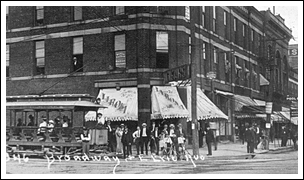
used by the LSE in the summer in early years. (Dennis Lamont) |
|
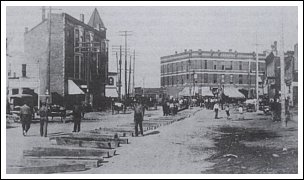
(Albert Doane) |
|
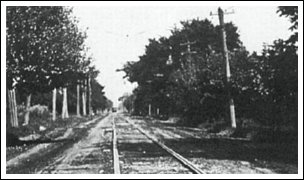
(Dennis Lamont) |
|

The wye track goes south to Reid Ave. (Bill Volkmer) |
|

the tiny East Erie Ave. local route. (Karel Liebenauer) |
|

working the Oberlin Ave. belt line route. (Tom Heinrich) |
|
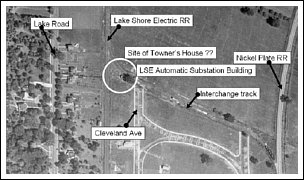
Plate railroad. (Dennis Lamont) |
|
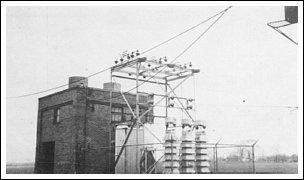
as it appeared in the 1920's. (Ralph Sayles photo) |
|
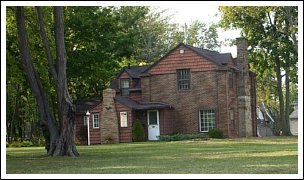
in 2010. (Drew Penfield photo) |
|
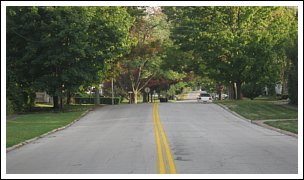
roadbed and the site of stop 95. (Dan Brady photo) |

picnic at Randall's Grove in 1904. (Thomas Patton) |
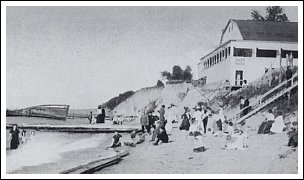
(Black River Historical Society) |
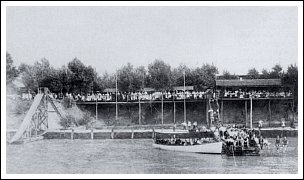
dancing from 1895-1924. (Black River Historical Society) |
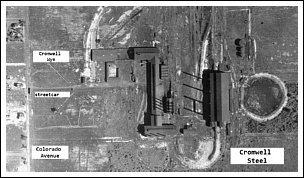
the wye track at the end of the local route. (Dennis Lamont) |
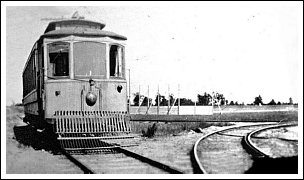
Ave. local route sometime in the 1920's. (Dennis Lamont) |
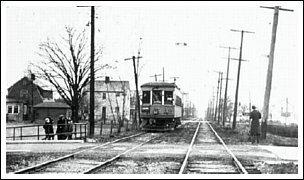
children to safely cross to Longfellow school. (Dennis Lamont) |
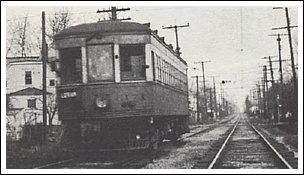
(Harry Christiansen) |

the local route are also visible in the street. (Thomas Patton) |

in both photos. (Dan Brady photo) |
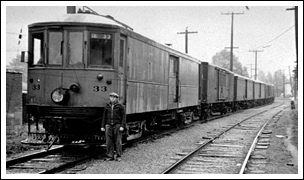
after cleaning out Beach Park in 1938. (Drew Penfield) |
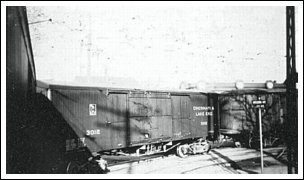
makes the turn at Arizona Ave. (Dennis Lamont) |
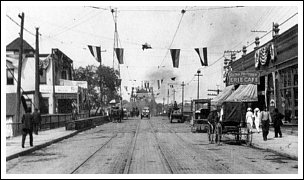
(Dennis Lamont) |
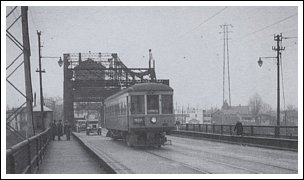
November day in 1934. (Ralph A. Perkin photo) |

to deal with than photo above. (Dennis Lamont) |

wire at the loop in the late 30's. (Dan Brady) |

visible at bottom of this 1930's aerial view. (Dennis Lamont) |

Railroad loop, stations, and wye all visible. (Dennis Lamont) |
|
|
|